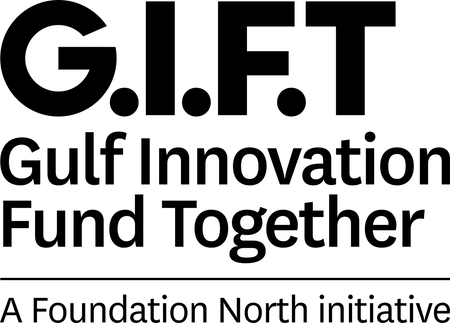Riverwatch
Who
WAI NZ Ltd, known as RiverWatch
Date
2018-2021
Awarded
$275,000 and $107,800 ($383,000 total)
Background
The aim of this project was to develop a low-cost, real-time water quality monitoring solution and to run a field trial with community engagement in the Clevedon Valley (Wairoa River). The funding from G.I.F.T allowed the project team to create the RiverWatch System for monitoring, recording and interpreting water quality.
The state of freshwater in Aotearoa has been worsening in recent decades. The Hauraki Gulf has been one of the most impacted areas of coastal water, with its concentration of people in expanding urban environments and its concentration of intensified agriculture. Water quality reporting has shown that our freshwater bodies have a serious problem with nitrate, phosphorus and sediment loading from direct application of fertiliser and run-off from bare land. There are also growing issues of E-coli entering waterways, particularly from cows. These intense broad scale impacts not only affect freshwater ecosystems but have important impacts on coastal ecosystems and communities as well. However, robust environmental monitoring and data collection of freshwater quality is sorely lacking.
RiverWatch is a floating device that enables 24/7 monitoring of water quality. The device has been developed to meet New Zealand conditions and to provide a low-cost way of monitoring water quality in real time. The instrument has seven interchangeable water quality sensors that send results to an open access website.
The focus and values of the RiverWatch team have centred on democratising water quality data and sharing what our rivers are saying.
The combined work of innovative technology, traditional knowledge, science, art and storytelling are used to create effective tools for engaging people in water quality information and especially in understanding and contributing to the enhancement of wai mauri (RiverWatch Team).
What happened
In 2018 RiverWatch used seed funding from G.I.F.T and combined it with a Project Grant from Callaghan Innovation to develop the RiverWatch Waka and the RiverWatch smarter data platform. This work programme established a water monitoring device with remote communication and networking capabilities.
The first phase of the project involved technical collaboration with Callaghan Innovation and the establishment of the business strategy, business plan and operations. The second phase involved preparing for commercialisation by building a tool for injection moulding and making units ‘customer ready’. This took much longer than anticipated, partly due to Covid-19. The third phase involved deploying units in the Wairoa River Catchment and using monitoring data for community engagement.
The intent was to conduct field trails of the RiverWatch prototypes in the Wairoa River in the Clevedon Valley catchment as this area was identified as a high priority catchment for achieving significant
sediment reduction. The site was approved by Ngai Tai ki Tamaki, the Friends of Wairoa River and Auckland Council. A local primary school (Clevedon Primary) was also keen to be involved.
Challenges
There were several challenges along the way for the RiverWatch team.
Limited network connectivity in rural areas meant they had to work with new technologies as well as change the hardware in the RiverWatch prototypes, to enable robust and efficient data transfer.
The team experienced a few issues with technical teams that over promised and could not deliver. While that was disappointing, the RiverWatch team learnt a great deal about managing expectations.
Community relationship-building and engagement was challenging for the Wairoa site, which meant it was difficult to establish an entire network of units in this area.
Impact investment for seeding social enterprise start-ups was hard to access despite the existence of an impact investment network in Aotearoa.
A key staff member left the company which had a negative impact.
COVID-19 significantly impacted the pace of the work and the trials.
Achievements
The application and usability of RiverWatch is unique. It is low cost and accurate, easy to update and improve. The data can be visualised and is accessible to a layperson or scientist. RiverWatch has gained support from water scientists, regional and local councils, citizen scientists, community groups, Iwi organisations, farmers and fishermen – within New Zealand and internationally. There is significant interest in using the sensor in salt water. It has also won: an AWS Innovation in Data Award; MYOB Head Start for Start Ups Competition and was selected for the SPROUT Agri-Business accelerator programme.
The potential contribution to restoring the mauri of the Hauraki Gulf is significant. Any catchment or waterway can choose to monitor and report on water quality, using these devices. They can engage the community with the information, share the information and use it to decide on outcomes. With the RiverWatch System the right decisions can be made on where to plant trees, what areas are of most concern, what are the main drivers of water quality change and how can water quality can be improved across the catchment. These can all be ascertained through the system RiverWatch has developed.
Next steps
The next phase of the project is to promote and deliver the RiverWatch Waka to community members and potential buyers. The team will begin another project with Callaghan Innovation which includes developing algorithms for machine learning, communication of data in meaningful terms, communication of data in Māori contexts and building in predictability of data.
Link to the RiverWatch website https://riverwatchsolutions.com/.

